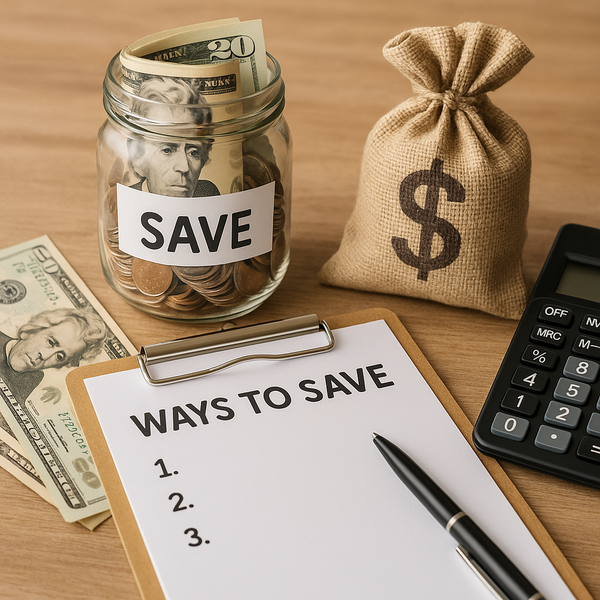
In today's economic climate, finding ways to make your money go further is more important than ever. The simple truth is, by consciously spending less, you create the opportunity to save more. This isn't about deprivation, but about making smarter choices that align with your financial goals. It's a journey towards gaining control over your finances and building a more secure future, one informed decision at a time.
Creating a Foundation: Your Personal Budget
The first step towards effectively spending less and saving more is understanding where your money is actually going. Without a clear picture, it's impossible to identify areas for improvement. Creating a personal budget acts as your financial roadmap. Start by tracking every expense for a month. Use a notebook, a spreadsheet, or a budgeting app – whatever works best for you. Categorize your spending: housing, transportation, food, utilities, entertainment, debt payments, etc.
Once you have a month's data, analyze it. Where are you spending the most? Are there subscriptions you don't use? Impulse purchases adding up? This tracking phase is often eye-opening and reveals hidden spending patterns you might not have been aware of. This foundational work is essential for building sustainable saving habits.
Identifying Areas to Cut Expenses
With your budget in hand, you can begin to look for opportunities to reduce spending. This doesn't mean cutting out everything you enjoy, but rather finding smarter, less expensive ways to do things or identifying non-essential costs that can be reduced or eliminated. Look at your largest variable expenses first, as these often offer the biggest potential for savings.
Consider your food budget. Eating out and convenience foods are significant drains on finances. Planning meals, cooking at home more often, and buying groceries strategically (using lists, avoiding shopping when hungry) can dramatically cut costs. Look for ways to save money on groceries by comparing prices, buying in bulk for staples, and reducing food waste.
Smart Shopping Habits for Everyday Savings
Beyond major budget categories, everyday shopping habits play a huge role in how much you spend. Impulse buying is a major culprit. Before making a purchase, especially for non-essentials, ask yourself if you truly need it and if it fits into your budget. Waiting 24 hours before buying something can help you decide if it was just a fleeting want.
Leverage discounts, coupons, and loyalty programs. Shop around for better deals on insurance, internet service, and mobile plans. Don't be afraid to negotiate or switch providers. Buying second-hand items, repairing instead of replacing, and embracing DIY projects where possible are also great ways to save money. Think about the long-term cost, not just the upfront price.
Reducing Household Bills and Utilities
Household expenses like utilities, internet, and phone bills are often fixed or semi-fixed costs, but there are still ways to reduce them. Simple actions like improving home insulation, using energy-efficient appliances and light bulbs, adjusting thermostats, and being mindful of water usage can lower utility bills significantly.
Review your internet and phone plans regularly. Are you paying for more data or speed than you need? Shop around for competitive plans or call your current provider to see if they can offer you a better rate. Cutting cable or streaming services you rarely watch can also free up a surprising amount of cash each month. These small changes add up over time.
Building a Savings Mindset
Saving money isn't just about cutting expenses; it's also about cultivating a mindset. Shift your focus from spending to saving and investing in your future. Set clear financial goals, whether it's building an emergency fund, saving for a down payment, or planning for retirement. Having goals provides motivation to stick to your budget and saving plan.
Automate your savings. Set up automatic transfers from your checking account to a savings account each payday. Treat savings as a non-negotiable expense, like a bill. This removes the temptation to spend the money. Watching your savings grow can be incredibly rewarding and reinforces positive financial behavior. Learn about different types of savings accounts, like high-yield savings accounts, that can help your money work harder for you.
Handling Debt and Interest
High-interest debt, such as credit card debt, can severely hinder your ability to save. The money spent on interest payments is money that could have gone into savings. Prioritizing paying down high-interest debt should be a key part of your strategy to spend less and save more. Explore debt payoff strategies like the debt snowball or debt avalanche method.
Look for opportunities to reduce the interest rate on your debt, such as balance transfers or debt consolidation loans, but be cautious and understand the terms. Avoiding taking on new debt, especially for non-essential items, is crucial. Live within your means and use credit responsibly. Reducing debt frees up significant cash flow for saving and other financial goals.
Consistency is Key
Implementing these strategies requires consistency and discipline. There will be challenges and occasional slip-ups, but the key is to stay committed to your goals. Regularly review your budget and progress. Adjust your spending habits as needed. Celebrate small victories along the way to stay motivated.
Spending less and saving more is a powerful combination that can transform your financial life. By understanding your spending, actively looking for ways to cut costs, adopting smart habits, and prioritizing saving and debt reduction, you gain control. Start today by tracking your spending and identifying one small change you can make. The journey towards financial freedom begins with conscious choices about how you spend and save your money.

